Podcast: Play in new window | Download
Subscribe: Apple Podcasts | RSS
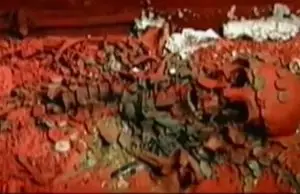 The date was April 11, 1994. A small archaeological team led by Arnoldo González Cruz labored diligently in the jungles of Chiapas at the famous Maya city of Palenque fully aware of the dangers beyond the archaeological zone. The state of Chiapas had been in the middle of a serious conflict involving the EZLN, a rebel group more popularly known as the Zapatistas. The possibility of violence near, the members of the Palenque Special Project focused on the task at hand: the excavation and exploration of buildings never before penetrated by archaeologists. A young archaeologist, Fanny López Jiménez, was doing routine stabilization work on a building called Temple Thirteen adjacent to Palenque’s famous Temple of the Inscriptions. López noticed a small crack in the stairs of the building. She grabbed her flashlight and peered into the crack, which had been partially obscured by weeds and crumbled masonry. She noticed a narrow corridor that seemingly led to a sealed door. López immediately informed her supervisor, Arnoldo González. González was still in a state of euphoria from what happened earlier that morning. He had discovered a tomb in the Temple of the Skull containing over 700 pieces of jade. González could not believe the great luck they were having that day after peering into the crack underneath the staircase that Fanny López had discovered. He was sure that the archaeologist had found a royal tomb complex, and the team had to contemplate its next steps very carefully. It took them a week to assess the stability of the building and to plan a way to discover what was inside Temple Thirteen. In an article about the find she wrote for the Mexican journal Arqueología mexicana, López described her thoughts during that long week between her initial peering into the structure and the tomb’s eventual exploration. She states, “From the moment of the discovery I had the audacity to say that it was (the tomb of) a woman, without having opened the sarcophagus; there I understood that feminine intuition is more than we can imagine.” Although cautioned by her superiors not to jump to conclusions or make suppositions, it turned out that Fanny López was 100% correct: She had stumbled upon the final resting place of a very powerful and influential woman of the ancient Mayan kingdom of Palenque. Because she was entombed after her body was given a coating of bright, rust-colored cinnabar, the world would later come to know this mysterious royal as “The Red Queen.”
The date was April 11, 1994. A small archaeological team led by Arnoldo González Cruz labored diligently in the jungles of Chiapas at the famous Maya city of Palenque fully aware of the dangers beyond the archaeological zone. The state of Chiapas had been in the middle of a serious conflict involving the EZLN, a rebel group more popularly known as the Zapatistas. The possibility of violence near, the members of the Palenque Special Project focused on the task at hand: the excavation and exploration of buildings never before penetrated by archaeologists. A young archaeologist, Fanny López Jiménez, was doing routine stabilization work on a building called Temple Thirteen adjacent to Palenque’s famous Temple of the Inscriptions. López noticed a small crack in the stairs of the building. She grabbed her flashlight and peered into the crack, which had been partially obscured by weeds and crumbled masonry. She noticed a narrow corridor that seemingly led to a sealed door. López immediately informed her supervisor, Arnoldo González. González was still in a state of euphoria from what happened earlier that morning. He had discovered a tomb in the Temple of the Skull containing over 700 pieces of jade. González could not believe the great luck they were having that day after peering into the crack underneath the staircase that Fanny López had discovered. He was sure that the archaeologist had found a royal tomb complex, and the team had to contemplate its next steps very carefully. It took them a week to assess the stability of the building and to plan a way to discover what was inside Temple Thirteen. In an article about the find she wrote for the Mexican journal Arqueología mexicana, López described her thoughts during that long week between her initial peering into the structure and the tomb’s eventual exploration. She states, “From the moment of the discovery I had the audacity to say that it was (the tomb of) a woman, without having opened the sarcophagus; there I understood that feminine intuition is more than we can imagine.” Although cautioned by her superiors not to jump to conclusions or make suppositions, it turned out that Fanny López was 100% correct: She had stumbled upon the final resting place of a very powerful and influential woman of the ancient Mayan kingdom of Palenque. Because she was entombed after her body was given a coating of bright, rust-colored cinnabar, the world would later come to know this mysterious royal as “The Red Queen.”
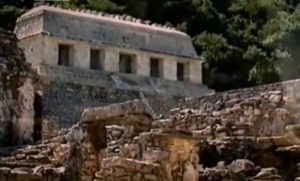 Palenque, whose Maya name was Ba-ak Lakamha, is a UNESCO World Heritage site located in the eastern part of the Mexican state of Chiapas, near the present-day border with Guatemala. The city was part of the Maya civilization, which is not to be confused with the Maya Empire, which did not exist. Maya civilization was a loosely connected group of city states sharing the same cultural elements much like the ancient Greeks. So, Palenque was an independent city-kingdom ruled by a powerful dynasty. To this day the city is somewhat shrouded in mystery. No one knows how old Palenque really is. Its first recorded ruler is supposed to have reigned in 2325 BC, but many archaeologists regard this as a mythological king. During its heyday, between about 400 AD and its collapse around 800 AD, Palenque was home to tens of thousands of people and a powerful aristocracy. The city held dominion over an area of about 40 square kilometers which included rich soils and ample fresh water sources. It controlled minor settlements and important trade routes extending to other parts of Mesoamerica. People generally associate Palenque with Pacal the Great, a king who ruled the city state for over 60 years and who is known not only for his grandiose building projects but for his mysterious sarcophagus which some say depicts an ancient astronaut. Please see Mexico Unexplained Episode Number six for more information about the so-called Palenque Astronaut. A great deal of work needs to be done on this “lost city” as only less than 10% of the city has been excavated. There are still well over a thousand buildings that have been identified but have not been explored or even cleared of the dense overgrowth of jungle. Palenque has had a long and complicated history, much of which is still not completely understood. Many different scientists from a variety of disciplines have attempted to place the Red Queen in her proper context within this great city and the rest of the Maya world, but questions surrounding her are ongoing. Ultimately, researchers are left with one question: Who was the Red Queen?
Palenque, whose Maya name was Ba-ak Lakamha, is a UNESCO World Heritage site located in the eastern part of the Mexican state of Chiapas, near the present-day border with Guatemala. The city was part of the Maya civilization, which is not to be confused with the Maya Empire, which did not exist. Maya civilization was a loosely connected group of city states sharing the same cultural elements much like the ancient Greeks. So, Palenque was an independent city-kingdom ruled by a powerful dynasty. To this day the city is somewhat shrouded in mystery. No one knows how old Palenque really is. Its first recorded ruler is supposed to have reigned in 2325 BC, but many archaeologists regard this as a mythological king. During its heyday, between about 400 AD and its collapse around 800 AD, Palenque was home to tens of thousands of people and a powerful aristocracy. The city held dominion over an area of about 40 square kilometers which included rich soils and ample fresh water sources. It controlled minor settlements and important trade routes extending to other parts of Mesoamerica. People generally associate Palenque with Pacal the Great, a king who ruled the city state for over 60 years and who is known not only for his grandiose building projects but for his mysterious sarcophagus which some say depicts an ancient astronaut. Please see Mexico Unexplained Episode Number six for more information about the so-called Palenque Astronaut. A great deal of work needs to be done on this “lost city” as only less than 10% of the city has been excavated. There are still well over a thousand buildings that have been identified but have not been explored or even cleared of the dense overgrowth of jungle. Palenque has had a long and complicated history, much of which is still not completely understood. Many different scientists from a variety of disciplines have attempted to place the Red Queen in her proper context within this great city and the rest of the Maya world, but questions surrounding her are ongoing. Ultimately, researchers are left with one question: Who was the Red Queen?
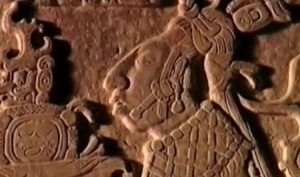 In its recorded history, Palenque has several powerful women from which to choose. In the mid- to late-1990s archaeologists came up with three possibilities. The first contender was a woman from Palenque named Yol Ik’nal who was the first female ruler in all of Maya recorded history. She was the daughter of King Kan Bahlam who left no male heir. She ruled the kingdom from December 23, 583 AD to November 4, 604 AD. Under her reign Palenque suffered a great defeat by neighboring regional power Calakmul in 599 AD but she remained on the throne and the city held on to its prestigious status. She was succeeded by her son, Ajen Yol Mat. Researchers also speculated that a woman named Lady Sak Ku’k’ could have also been the Red Queen. It’s unclear whether Sak Ku’k’ held the formal title of “queen” but she did lead Palenque during a time of crisis when there seems to have been an absence of a formal ruler. Archaeologists argue over the identities of Sak Ku’k’s parents but it was clear she was part of the noble ruling class of the city. According to Palenque’s written records, Sak Ku’k’ ruled Palenque for just under three years from 612 to 615 at which time she installed her son on the throne, who would later be known as Pacal the Great. As Pacal was only 12 years old at the time, Lady Sak Ku’k’ wielded enormous power behind the throne, some say even through to her death twenty-five years later in the year 640. Could the powerful Sak Ku’k’ be the Red Queen? The third possibility is a woman named Tzakbu Ajaw, a teenage girl from a noble family who came to Palenque from a place called A’Ax Teh, or the Place of the God of the Three Trees, a small town north of Palenque in the modern Mexican state of Tabasco. Tzakbu Ajaw became the wife of Pacal the Great and would bear him three sons. She would be the mother of two kings of Palenque and was the grandmother of one of the kingdom’s last rulers. As the wife of Palenque’s greatest and longest-lasting king, Tzakbu Ajaw lived during a time of great abundance and enjoyed the life of a very high-status individual.
In its recorded history, Palenque has several powerful women from which to choose. In the mid- to late-1990s archaeologists came up with three possibilities. The first contender was a woman from Palenque named Yol Ik’nal who was the first female ruler in all of Maya recorded history. She was the daughter of King Kan Bahlam who left no male heir. She ruled the kingdom from December 23, 583 AD to November 4, 604 AD. Under her reign Palenque suffered a great defeat by neighboring regional power Calakmul in 599 AD but she remained on the throne and the city held on to its prestigious status. She was succeeded by her son, Ajen Yol Mat. Researchers also speculated that a woman named Lady Sak Ku’k’ could have also been the Red Queen. It’s unclear whether Sak Ku’k’ held the formal title of “queen” but she did lead Palenque during a time of crisis when there seems to have been an absence of a formal ruler. Archaeologists argue over the identities of Sak Ku’k’s parents but it was clear she was part of the noble ruling class of the city. According to Palenque’s written records, Sak Ku’k’ ruled Palenque for just under three years from 612 to 615 at which time she installed her son on the throne, who would later be known as Pacal the Great. As Pacal was only 12 years old at the time, Lady Sak Ku’k’ wielded enormous power behind the throne, some say even through to her death twenty-five years later in the year 640. Could the powerful Sak Ku’k’ be the Red Queen? The third possibility is a woman named Tzakbu Ajaw, a teenage girl from a noble family who came to Palenque from a place called A’Ax Teh, or the Place of the God of the Three Trees, a small town north of Palenque in the modern Mexican state of Tabasco. Tzakbu Ajaw became the wife of Pacal the Great and would bear him three sons. She would be the mother of two kings of Palenque and was the grandmother of one of the kingdom’s last rulers. As the wife of Palenque’s greatest and longest-lasting king, Tzakbu Ajaw lived during a time of great abundance and enjoyed the life of a very high-status individual.
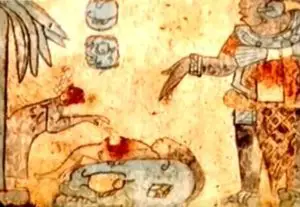 Solving the mystery of the identity of the Red Queen begins with a thorough examination of her tomb and her remains, which taps into many scientific disciplines. The nickname of this female ruler comes from the fact that she was covered in a thick coating of mercury sulfide or cinnabar, which gives her remains a bright rust color, the same color used on the outside of the Maya temples. Some archaeologists believe that this symbolizes blood, and thus life, and may have been instrumental in helping the Red Queen travel to the afterworld. Pacal the Great, buried in the temple next to the Red Queen, was similarly coated in cinnabar. The queen’s tomb was one of the richest Maya tombs ever found. In addition to her funerary mask, which was made of 280 pieces of malachite, inside her tomb archaeologists found 1,140 pieces of jadite. Alongside the Red Queen’s sarcophagus there were two other skeletons. One was of a prepubescent boy of about 10 who was decapitated. The other was of a girl in her teens who had her heart extracted from her and was covered with various stab wounds. The youths were probably sacrificed in the tomb to assist in a smooth transition of the Red Queen to her new realm. The heart of the girl was most likely burned, as was the tradition in blood sacrifices. The ancient Maya believed that the smoke generated from burning organs and bloodied paper sent messages to the gods above who would smell the smoke and react accordingly. The bodies of the youths provide important clues to the identity of the Red Queen.
Solving the mystery of the identity of the Red Queen begins with a thorough examination of her tomb and her remains, which taps into many scientific disciplines. The nickname of this female ruler comes from the fact that she was covered in a thick coating of mercury sulfide or cinnabar, which gives her remains a bright rust color, the same color used on the outside of the Maya temples. Some archaeologists believe that this symbolizes blood, and thus life, and may have been instrumental in helping the Red Queen travel to the afterworld. Pacal the Great, buried in the temple next to the Red Queen, was similarly coated in cinnabar. The queen’s tomb was one of the richest Maya tombs ever found. In addition to her funerary mask, which was made of 280 pieces of malachite, inside her tomb archaeologists found 1,140 pieces of jadite. Alongside the Red Queen’s sarcophagus there were two other skeletons. One was of a prepubescent boy of about 10 who was decapitated. The other was of a girl in her teens who had her heart extracted from her and was covered with various stab wounds. The youths were probably sacrificed in the tomb to assist in a smooth transition of the Red Queen to her new realm. The heart of the girl was most likely burned, as was the tradition in blood sacrifices. The ancient Maya believed that the smoke generated from burning organs and bloodied paper sent messages to the gods above who would smell the smoke and react accordingly. The bodies of the youths provide important clues to the identity of the Red Queen.
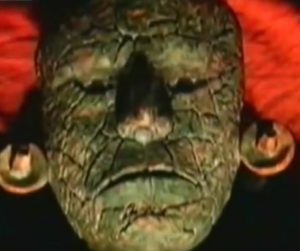 Two major groups of scientific tests tried to put a date on the queen and tried to link her to DNA samples of other rulers. Carbon 14 dating was difficult to on the Red Queen’s remains because the cinnabar was interfering with the tests. Because the remains of the sacrificed youths were free of the red mineral, they were tested and the date range placed them between 620 and 680 AD. These dates alone were not enough. The lengthy process of linking DNA eliminated two possibilities from the original list of 3 powerful Palenque women. Through this testing a lab in northern Canada concluded that the Red Queen was not from the same bloodline as Pacal the Great, so the remains could not have been those of Yol Ik’nal, the first female ruler in recorded Maya history or those of Lady Sak Ku’k’ the uncrowned queen of Palenque and the mother of Pacal the Great. Besides, the dating of the young human remains found beside the Red Queen’s sarcophagus were too late in the Palenque timeline to coincide with the lives of the first two powerful women mentioned. The logical deduction would be that the Red Queen was most likely Tzakbu Ajaw, the wife of Pacal the Great. She died in 672 AD which would put her in the date range of the remains of the sacrificed youths. Her elaborate tomb was in the building adjacent to the Temple of the Inscriptions where Pacal the Great, the husband of Tzakbu Ajaw, was laid to rest. A definitive way to confirm whether the Red Queen was the wife of Pacal is to find the remains of Pacal’s sons and examine their mitochondrial DNA to make a link to the Red Queen. As previously mentioned, most of the ancient city of Palenque remains unexplored and while some archaeologist have theories on where the tombs of Pacal’s sons most likely are, no one knows for sure. Until a more solid link is made among the members of the dynasty through existing physical remains, the identity of the Red Queen will continue to be a delightful mystery.
Two major groups of scientific tests tried to put a date on the queen and tried to link her to DNA samples of other rulers. Carbon 14 dating was difficult to on the Red Queen’s remains because the cinnabar was interfering with the tests. Because the remains of the sacrificed youths were free of the red mineral, they were tested and the date range placed them between 620 and 680 AD. These dates alone were not enough. The lengthy process of linking DNA eliminated two possibilities from the original list of 3 powerful Palenque women. Through this testing a lab in northern Canada concluded that the Red Queen was not from the same bloodline as Pacal the Great, so the remains could not have been those of Yol Ik’nal, the first female ruler in recorded Maya history or those of Lady Sak Ku’k’ the uncrowned queen of Palenque and the mother of Pacal the Great. Besides, the dating of the young human remains found beside the Red Queen’s sarcophagus were too late in the Palenque timeline to coincide with the lives of the first two powerful women mentioned. The logical deduction would be that the Red Queen was most likely Tzakbu Ajaw, the wife of Pacal the Great. She died in 672 AD which would put her in the date range of the remains of the sacrificed youths. Her elaborate tomb was in the building adjacent to the Temple of the Inscriptions where Pacal the Great, the husband of Tzakbu Ajaw, was laid to rest. A definitive way to confirm whether the Red Queen was the wife of Pacal is to find the remains of Pacal’s sons and examine their mitochondrial DNA to make a link to the Red Queen. As previously mentioned, most of the ancient city of Palenque remains unexplored and while some archaeologist have theories on where the tombs of Pacal’s sons most likely are, no one knows for sure. Until a more solid link is made among the members of the dynasty through existing physical remains, the identity of the Red Queen will continue to be a delightful mystery.
REFERENCES
González Cruz, Arnoldo. La reina roja: una tumba real de Palenque. New York: Turner, 2011. (in Spanish)
López Jiménez, Fanny, “¿Quién es la Reina Roja?”, Arqueología Mexicana núm. 69, pp. 66-69. (in Spanish)

One thought on “Who was the Red Queen?”
I don’t like the fact that the ancient Mayans not only sacrificed people, but children as well!